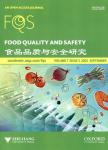A risk scoring system for seafood supply chain breaches and examination of freshwater fish imported to Australia
作者机构:School of Animal and Veterinary Sciences&Graham Centre for Agricultural InnovationCharles Sturt UniversityWagga WaggaNSWAustralia
出 版 物:《Food Quality and Safety》 (食品品质与安全研究(英文版))
年 卷 期:2021年第5卷第3期
页 面:256-270页
核心收录:
学科分类:0832[工学-食品科学与工程(可授工学、农学学位)] 1004[医学-公共卫生与预防医学(可授医学、理学学位)] 08[工学] 083204[工学-水产品加工及贮藏工程]
基 金:Australian Research Training Program Scholarship through Charles Sturt University Australia
主 题:Imported seafood supply chain breaches parasites.
摘 要:Legislative changes have altered the way imported edible seafood is inspected in Australia.Greater onus of responsibility has been placed on exporting countries to provide documentary evidence of adherence to internally recognized food safety standards.According to global trade agreements,any additional safety tests applied to freshwater fish imported into Australia must be justified.Therefore,the aim of this study was to develop a risk scoring method to provide justification for identifying countries as Freshwater fish high risk and to examine the seafood they export to Australia for seafood supply chain breaches.Scori ng was con ducted using six predictor variables,identified in the literature as important contributors to seafood supply chain breaches,to achieve the outcome variable,Country considered Freshwater fish high risk.Sixty-seven fish fillets(9.55 kg)of the same species were examined from the third highest scoring country(Country 20)and 562(5.6 kg)whole fish from the sixth highest scoring country(Country 22).Country 20 had supply chain breaches of 28 macroscopic yellow cysts in one fillet.Two hundred and thirteen parasites and other supply chain breaches were identified in fish from Country 22,in eluding retai ned liver(91 per cent),visible mud(11 per cent),a variety of debris(16 per cent)and,depending on the commodity code,these fish were imported to Australia under full intestine(90 per cent),retained gills(89 per cent),and partial intestine(9 per cent).Three serious physical hazards were recovered from the edible portion of three consumer-ready fish and snails of Genus Lymnaea and Indoplanorbis were recovered from gill mud also from consumer-readyz fish.The study showed variable results from the scoring system and vast differences in seafood supply chain breaches between the third and sixth highest scoring countries.



